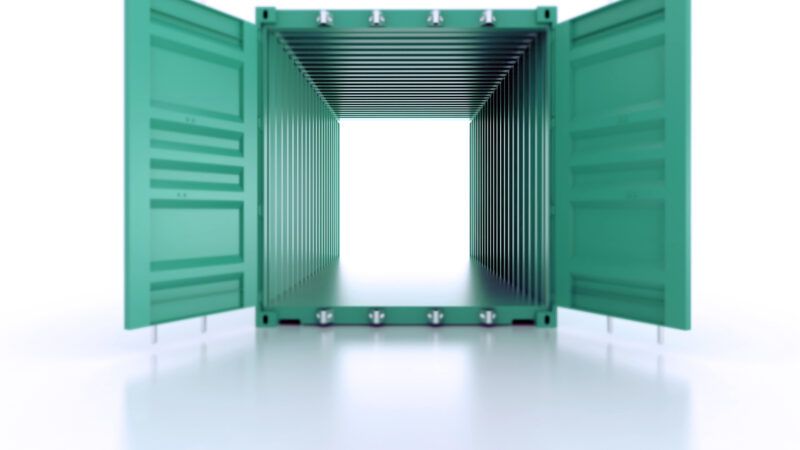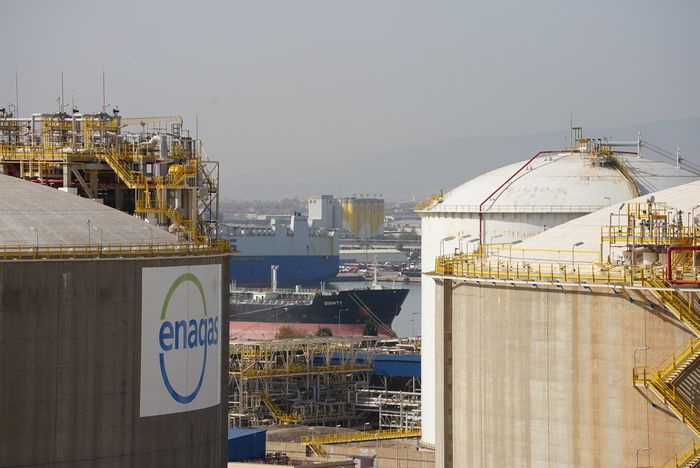 In 2021, LNG bunkering operations at the Port of Barcelona accounted for almost 11% of total bunkering operations, consolidating the Port as an LNG hub in the Mediterranean. (Port de Barcelona)
In 2021, LNG bunkering operations at the Port of Barcelona accounted for almost 11% of total bunkering operations, consolidating the Port as an LNG hub in the Mediterranean. (Port de Barcelona)
LNG: a fuel for energy transition
The use of liquefied natural gas (LNG) as a transition fuel towards an emission-free future is already a reality. Its presence among ships and cruise ships has increased, paving the way for the use of other, even more sustainable fuels, such as bio-LNG and synthetic natural gas.
 In 2021, LNG bunkering operations at the Port of Barcelona accounted for almost 11% of total bunkering operations, consolidating the Port as an LNG hub in the Mediterranean. (Port de Barcelona)
In 2021, LNG bunkering operations at the Port of Barcelona accounted for almost 11% of total bunkering operations, consolidating the Port as an LNG hub in the Mediterranean. (Port de Barcelona)
LNG, a fuel in expansion
The shipping industry has stepped on the accelerator to achieve what will undoubtedly be one of the most ambitious goals of this century: to reduce its annual greenhouse gas emissions by (at least) 50 % by 2050, based on 2008 levels. In a world where 90% of goods are transported by sea, this transition needs to be based on fuels that are cleaner than conventional ones, paving the way towards zero emissions.
The presence of LNG in the shipping world has increased in recent years. According to DNV's platform, there are currently 355 LNG-powered ships in operation and orders have been placed for a further 521.
2022 ended with the addition of 222 new orders for dual-fuel LNG-fuelled ships to DNV's Alternative Fuels Insight platform, only 20 fewer than in 2021 despite the gas price increase over the past year. In addition, 104 started operations in 2022, representing a 41% growth in the shipping fleet. All this means that, according to the DNV platform, there are 355 ships using LNG as fuel in the world today, and there are orders in progress (adding the 222 added in 2022) for a further 521 ships.
Among these ships, there are also cruise ships. The first passenger ship to use LNG for propulsion was the AIDAnova, a 337-metre Carnival Corporation ship sailing in the Mediterranean. Since the AIDAnova was commissioned in December 2018, 20 more LNG-powered cruise ships have been announced.
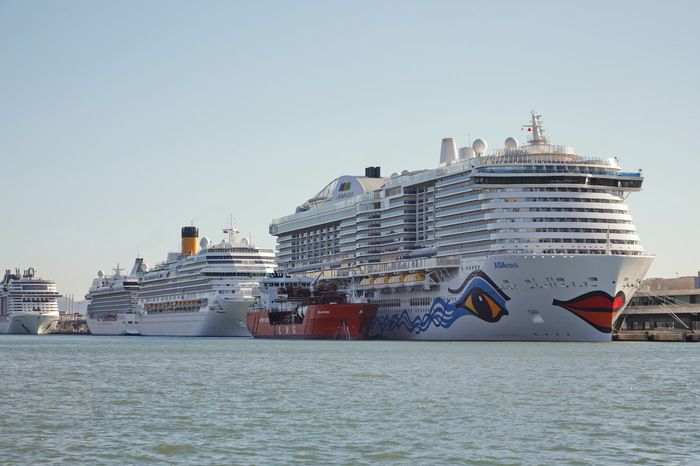
Options for bunkering ships with LNG have also increased recently. According to the International Gas Union's (IGU) 'World LNG Report 2022', the fleet of bunkering vessels reached 30 units in April 2022, a number that, according to DNV, rose to 43 units in early 2023 with orders in place for a further 18 units. Two-thirds of these operate in Europe, where emission control regulations are stricter. On the other hand, the report notes, the fleet in Asia and North America has also begun to grow.
In 2021, for example, nine supply vessels began operating worldwide. Some did so in regions where there were no such vessels before: the FueLNG Bellina and the Avenir Accolade, for example, were the first to operate in Singapore and Brazil, respectively.
The increase in the number of LNG-powered units has also encouraged the construction of bunkering vessels and their positioning in key ports along the shipping routes.
The first LNG bunkering vessel was the Pioneer Knudsen, which was commissioned in 2004. However, most of these have only become active in the last five years, so we are talking about a young fleet. In addition to these, facilities have been included in ports and terminals, allowing for an increasingly efficient distribution of this fuel.
There are currently 355 LNG-powered ships in operation and orders have been placed for a further 521
Cleaner than conventional fuels
According to various studies, this fuel eliminates sulphur oxide and fine particulate emissions and significantly reduces nitrogen oxide emissions. In total, its use reduces greenhouse gas emissions by 10-25%.
"LNG is a cleaner fuel than conventional fuels, which makes it possible to reduce polluting emissions and minimise greenhouse gas emissions, which is particularly important for ports located near large cities, as is the case of Barcelona," explains Daniel Ruiz, Environment technician at the Port of Barcelona. "Moreover, its use opens the door to new future fuels with zero or almost zero emissions, such as bio-LNG or synthetic LNG, and later hydrogen, ammonia or biomethanol."
The experience gained by ports such as Barcelona with the use of LNG makes it possible to tackle the problems presented by these fuels, such as flammability or cryogenics. The experience and knowledge gained is materialised in the form of safety measures, regulations for the supply of fuel or new logistical supply chains, among other advances.
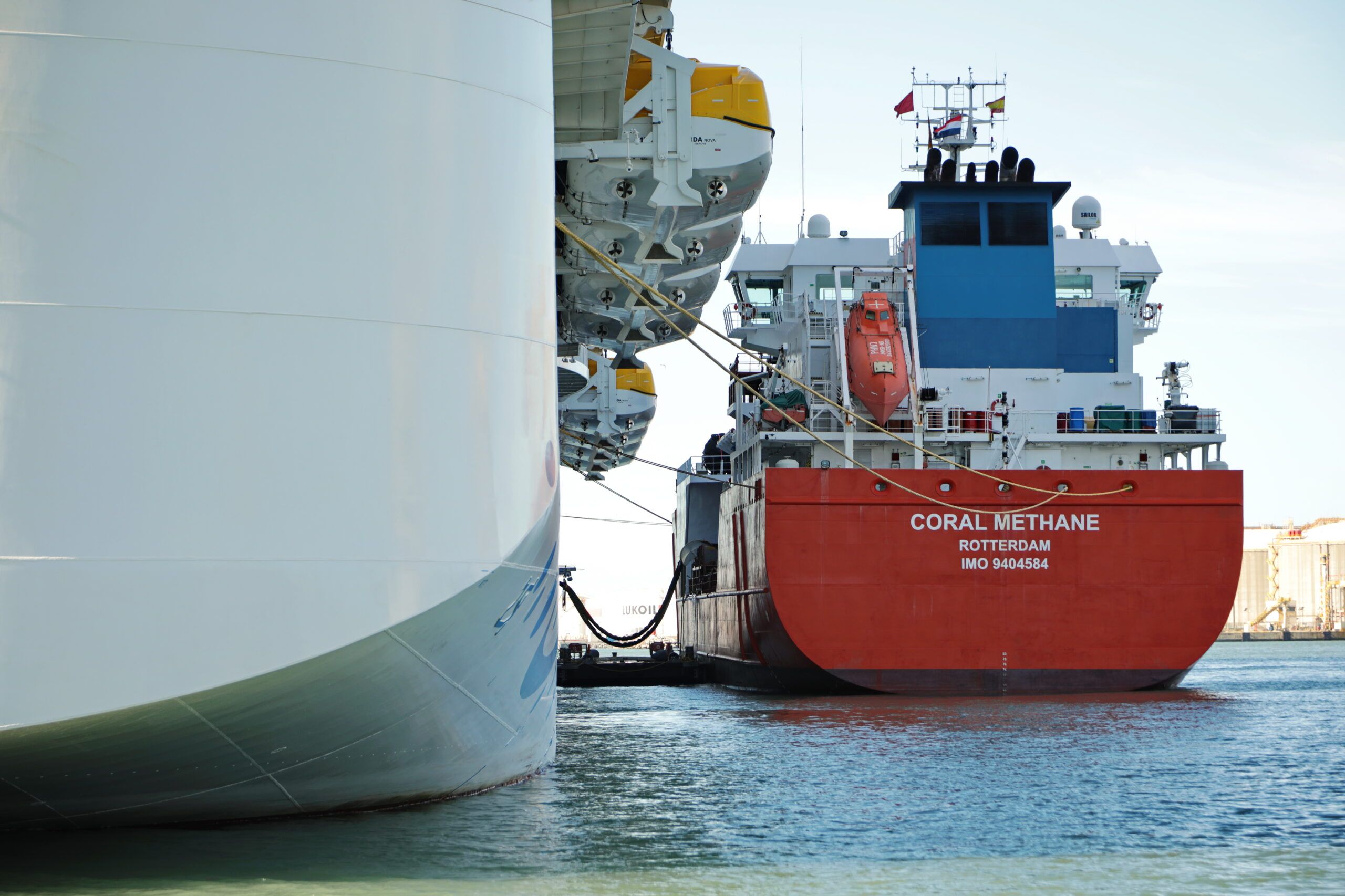
LNG, key to the decarbonisation plan
"When the policy of introducing LNG at the Port of Barcelona began in 2014, there were practically no ships powered by this fuel. Nor were there any specific supply logistics and the numerous reluctances to use it made its implementation practically impossible," explains Jordi Vila, head of the Environment at the Barcelona Port Authority.
Today, however, the situation is completely different. "Since 2017, LNG bunkering operations have been carried out from tanker trucks, in the truck-to-ship mode, and since 2019, in the ship-to-ship mode, always safely and without any accidents," says Vila.
Vila also adds that the introduction of LNG in the port of Barcelona has helped to break the pre-established patterns and inertia acquired over decades of using traditional fuels. Thanks to the implementation of pilot projects, such as Cleanport or Core LNGas hive, the necessary risk analyses have been carried out for the safe supply of the fuel. Furthermore, the development of the logistical supply chain has been facilitated.
"The port community, shipowners and the Port Authority itself were able to experience that the fuel was technically viable and safe, facilitating its subsequent penetration as a fuel for LNG-powered ships and opening up the future introduction of other fuels of equal or greater complexity from the safety point of view, such as hydrogen or ammonia," explains the head of the Environment.
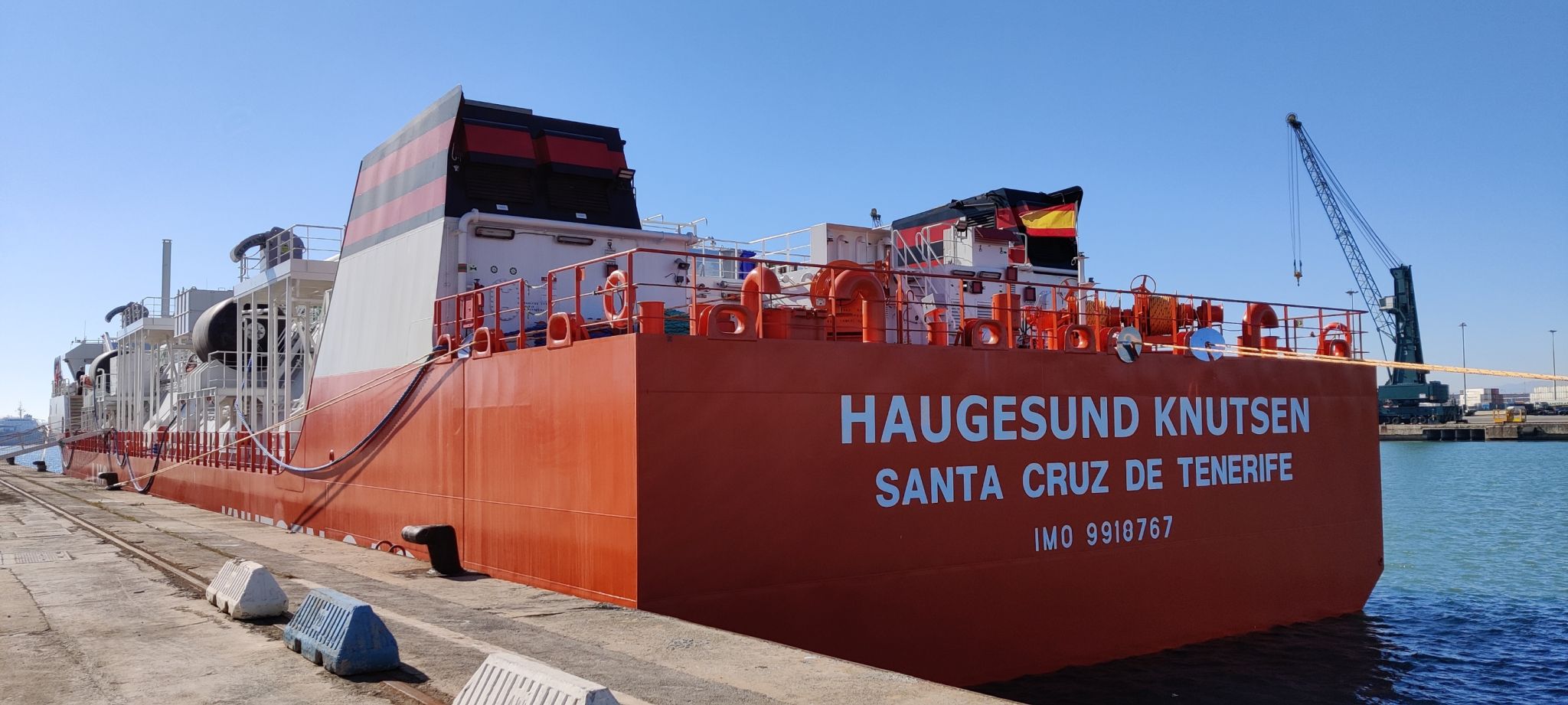
LNG in numbers
In 2021, LNG bunkering operations at the Port of Barcelona accounted for almost 11% of total bunkering operations. In 2022, however, the figures reduced. "It has been complicated by the global rise in LNG prices, aggravated by the war in Ukraine. This has meant that LNG carriers, having dual engines, reduced their LNG usage," explains Daniel Ruiz.
In total, 26,400 cubic metres of LNG were supplied in 32 operations, compared to 65,000 cubic metres and 236 operations in 2021 (a year in which the effects of the crisis caused by the COVID-19 pandemic were still there). "It is estimated that, when prices normalise and regulatory measures penalising the use of diesel start to be applied, LNG use will return to levels higher than those of 2021," concludes Vila.
In addition, LNG use is expected to increase as more ships are built using LNG. In turn, more vessels will use it when the logistics chain is implemented in other shipping routes. "Currently the average life of a ship is around 25 to 30 years, so in order to order a ship with a new fuel, the shipowner must be sure that the fuel will be available on all its routes, throughout this time and at a reasonable price," says Vila.
"Although LNG is a fossil fuel, it is the only technologically mature fuel that can reduce air pollution and CO2 emissions which has a logistics chain in place in many ports. This allows shipowners to be sure about its supply," he explains.
A bunkering hub in the Mediterranean
Since the beginning of 2023, the Haugesund Knutsen has been permanently based at the Port of Barcelona. This is the first LNG bunkering vessel to be built in Spain and the first to be permanently based in a Spanish port.
Until now, vessels supplying LNG to other ships in the Port of Barcelona were not based there, but had to make long journeys - sometimes from Gibraltar, the Canary Islands or the Netherlands - to reach their destination. The Haugesund Knutsen, however, will be based in the Mediterranean port, which will facilitate and reduce the costs of these operations.
The vessel itself has been designed for agile and flexible deliveries. "It has bunker stations on both sides, as well as amidships and at the stern of the vessel, which allows it to supply port and starboard to different types of receiving vessels and to operate in a wide range of terminals for loading LNG," explains Daniel Ruiz.
"It has two bi-lobe C-type tanks with a total capacity of 5,000 cubic metres of LNG and has been designed with a low overhead draft, which allows it to dock with cruise ships below the lifeboat line. This avoids the use of a breakaway pontoon between the supply vessel and the receiver, saving costs and operating time," he adds.
The vessel, owned by Knutsen and Enagás subsidiary Scale Gas, was built as part of the LNGHive 2 Barcelona project. According to the Port of Barcelona's environmental managers, participation in this project has led to improvements in the drafting of a new set of specific specifications for the supply of LNG as a port service, which will be published in a few months and which has enabled the existing supply regulations to be improved.
"This and other advances will help to consolidate the port of Barcelona as an LNG bunkering hub in the Mediterranean. Furthermore, our wish is that in the future it will also be consolidated as a bunkering hub for the new zero-carbon fuels," says Ruiz.



